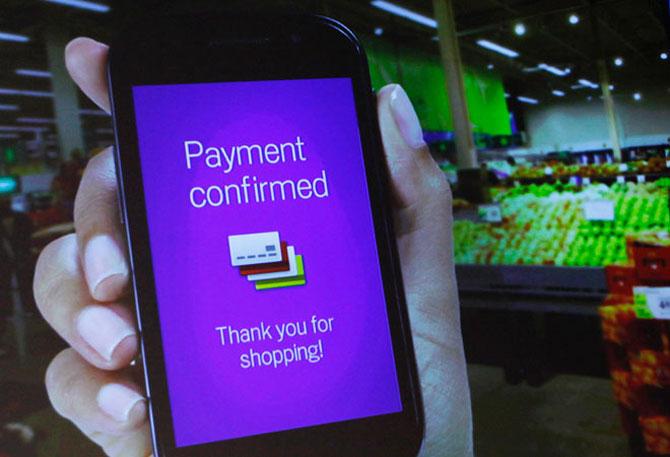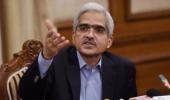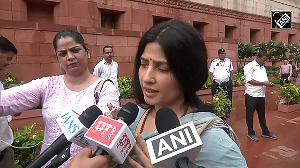Surge in UPI transactions is because of an increased consumer interest in making bill payments and recharging mobile phones online, and purchase of non-essential goods on e-commerce platforms.

Unified Payments Interface (UPI) handled 2.23 billion transactions worth Rs 4.16 trillion in December, a record both in terms of volume and value.
It breached the 2-billion mark for the third straight month, according to the National Payments Corporation of India (NPCI).
In November, UPI had recorded 2.21 billion transactions worth Rs 3.90 trillion, and had clocked Rs 3.86 trillion of payments in October, which is when it had surpassed 2 billion transactions for the first time.
Launched in 2016, UPI crossed 1 billion transactions for the first time in October 2019. While it took UPI three years to reach a billion transactions in a month, the next billion came in just a year.
The year 2020 was an eventful one as far as deepening the adoption of digital payments in the country is concerned. Despite a minor blip in the initial months of the Covid-19 pandemic, where transaction volume and value dipped, the recovery was fast and the flagship payments platforms of the NPCI -- UPI, Immediate Payment Service (IMPS), and others -- recorded fresh highs in the following months.
"We have seen a V-shaped recovery after the pandemic struck as the outbreak accelerated the shift to digital platforms," according to a report by PwC titled 'The Indian payments handbook – 2020–2025'. "Businesses are now looking to integrate both online and offline channels in order to provide an omnichannel experience to their customers.”
The report goes on to say the surge in UPI transactions is because of an increased consumer interest in making bill payments and recharging mobile phones online, and purchase of non-essential goods on e-commerce platforms.
There has been a shift in the consumer mindset during the Covid-19 crisis and the subsequent lockdown, as they took to digital modes of payment even in sectors like education.
"In 2021, will see a further acceleration in the adoption of digital payments. UPI and WhatsApp Pay will continue to be the drivers", said Ashneer Grover, co-founder and CEO of BharatPe. "Also, I believe that next year we will see tier-2, 3, 4 cities as the key growth drivers for UPI and digital payments."
The NPCI has allowed Facebook-backed WhatsApp to go live on the UPI platform in a graded manner.
IMPS recorded 355.69 million transactions in December, worth Rs 2.92 trillion, an all-time high, up 38.68 per cent in volume terms year-on-year and 38.58 per cent in value terms.
In November, IMPS clocked 339.11 million transactions worth Rs 2.76 trillion and in October, it had reported 319 million transactions worth Rs 2.74 trillion. Similarly, Bharat Bill Payment System (BBPS) recorded 26.22 million transactions in December, worth Rs 3,962.76 crore. And, in November, it recorded 23.93 million transactions worth Rs 3,713.21 crore.
NPCI's NETC-operated FASTag recorded 138.41 million transactions worth Rs 2,303.79 crore, while in November, it had recorded 124.88 million transactions worth Rs 2,102.02 crore. The road ministry has made FASTag mandatory for all vehicles from January 1, to enhance digital payments. However, there will still be a hybrid lane for collecting toll fee till February 15.
Prior to 2010, digital transactions saw single-digit growth. From 2010-2016, this figure rose to 28 per cent owing to the launch of faster payment modes and jumped to 56 per cent in 2016-17 following the government's demonetisation exercise. The changing consumer preferences are likely to create a revenue pool of Rs 2.93 trillion by 2024-25 for payment players -- a figure that was at Rs 1.98 trillion in 2019-20, the PwC report said.
"The broken banking pieces will be re-assembled to re-bank India in 2021," said Anand Kumar Bajaj, founder of PayNearby, the largest branchless banking network.
He said the strategy of reaching out to the masses to popularise digital payments would have been the new normal in some years, but it got preponed due to the pandemic.
"Digital payments have become a necessity now across India. As far as debit cards are concerned, the 150 million debit cards that went out of circulation in November 2019 have not been replaced because of various reasons including low MDR."
"Hence, muted debit cards need to gain volume. On the other hand, credit cards will be in use not only for credit purposes but also because of convenience, if not at merchant shops, then at e-commerce platforms for shopping and other purposes. UPI permission for credit cards will help deepening of offline payments by the credit card segment," he said.
Last year, the RBI had increased the limit for contactless card transactions from Rs 2,000 to Rs 5,000. This came into effect from Friday. The same was done for e-mandates for recurring transactions through cards and UPI.
T R Ramachandran, group country manager for India & South Asia at Visa, tweeted: "We expect this to cover more than 80 per cent of everyday transactions. This is potentially game changing in terms of consumer and merchant habit formation."
RBI comes up with an index on digital payments
The RBI has introduced a digital payments index (DPI) to capture the extent of digitisation of payments in the country.
It will use five parameters. Among these, payments enablers will have a weighting of 25 per cent, while payment infrastructure (demand-side factors) a share of 10 per cent.
Payment infrastructure (supply-side factors) will have a 15 per cent weighting, while payment performance and consumer centricity will have 45 per cent and 5 per cent, respectively.
The DPI has been formed with March 2018 as the base period -- which means DPI score for March 2018 is set at 100. The DPI for March 2019 and March 2020 works out to 153.47 and 207.84, respectively, indicating appreciable growth. From March this year, the DPI will be published on the RBI's website on a semi-annual basis, with a lag of 4 months, the RBI said.












